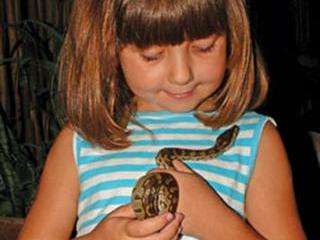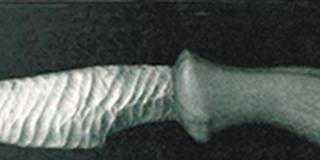
The driver slowed down, but didn’t stop. The hitch-hiker ran alongside the car and jumped onto the bonnet. To avoid falling off, he grabbed the radio antenna, bending it flat in the process. Then he sat, facing forward, in front of the driver, blocking his view. But the driver, who was also the proud owner of the new dark maroon Hillman Minx sedan, stayed calm, despite his wife’s shriek of alarm, and continued driving very slowly. He had a trick up his sleeve.
The driver was my father, and we were in the Kruger Park, in the days when all roads there were still gravel, travelling along the Sabi River road towards Lower Sabi. I was only about 12, but my young brother and I had often accompanied our parents to the park. Today, we are both passionate about wildlife and truly wild places. In my case, it was partly genetic, but there’s no doubt that few things leave such lasting impressions on your mind as those that you are exposed to as a child. They often determine your views and what you become as an adult.
We knew the non-paying passenger well. He was a big, crafty, male baboon that hitched a free ride every morning on the bonnet of a car from Skukuza to Lower Sabi and back again in the afternoon. My father would have none if this. He slowly lowered his hand, dug a very realistic rubber snake from the side-pocket of the Hillman, and quietly placed it on the dashboard behind the big baboon.
Then he tapped on the windscreen. The hitch-hiker glanced over his shoulder, saw the snake, and with a terrified alarm-bark, launched himself off the bonnet, leaving a large blob of dung on the bonnet. Unable to exit the car before we reached camp, we discovered that maroon is not a good colour for a car: the pink stain left by the stomach acid could not be removed. It came back even after a respray and was still evident years later, when the car was sold.
Primeval fear
Few animals are more human-like in their behaviour than baboons and monkeys. Judging from the racket kicked up by even very young vervet monkeys where I live when they see a snake, their fear of the reptiles must be part of their genetic make-up. I suspect that this is also true of most humans. Some of our primordial fear of snakes forms part of our genetic baggage from our caveman days when danger lurked behind every bush and rock.
Yet, of the nearly 3 000 snake species on earth, only about 450 are venomous and only 270 have venom potentially fatal to humans. Most of these are not really dangerous either, because of their habits or fang anatomy. Only about 25 (fewer than 1%) are responsible for most snakebite cases. Despite this, few other living things arouse such fear and loathing among humans and our closest primate cousins.
Scientists studying ophidiophobia – the excessive fear of snakes – have concluded that this phenomenon runs deep in our ancestral roots. In Africa, where we are told that hominids evolved and venomous snakes were common, there are no simple visual rules for distinguishing harmless from truly dangerous species. Natural selection probably favoured those hominids who indiscriminately avoided all snakes.
Deified – and feared
Although snakes cause almost universal fear among humans, these creatures have perhaps the deepest and most complex relationship with people of any animals – and one that defies easy explanation. Snakes have fascinated and frightened people for millennia. In the mythology of many cultures, including Africa, they are both feared and revered, often being seen as protectors as well as the incarnation of deceased relatives. For others, they represent rebirth and renewal, due to their ability to shed their skins.
Throughout history, snakes have represented gods, deities and kings, as well as emblems in warfare. Examples are legion on all continents. Egyptian Pharaohs used cobras on their crowns as symbols of royalty. Meretseger was the Egyptian cobra-headed goddess of fertility. Kukulkan was the feathered serpent-deity of the ancient Mayans. Asclepius was the ancient Greek god of healing, who gave the world his serpent-entwined rod as a symbol still used by the medical profession.
It is in the spiritual world, though, where snakes have been most prominent. To ancient cultures, their uncanny ability to disappear and suddenly reappear made them seem like messengers from the spirit world, and their role in cults and religions worldwide could fill several books. Buddhism and Hinduism teach that the thousand-headed Grand Serpent Damballah brought forth creation.
In the Old Testament, Eve’s downfall in the Garden of Eden – brought about by Satan in the form of a snake – has erroneously and sadly been used for centuries as justification for killing snakes. And the Bible devotes no fewer than 27 passages to snakes, of which the most significant can be found in the Gospel of John 3:14-15. Here, Jesus makes a direct comparison between the resurrection of the Son of Man and Moses raising up the serpent as a sign and symbol of salvation:
“As Moses lifted up the serpent in the wilderness, even so must the Son of Man be lifted up, that whoever believes in Him should not perish but have eternal life.” Despite this positive comparison, early Christians often saw snakes as symbols of evil and therefore to be feared, and to my astonishment this view persists even to this present day where knowledge is a click away on the internet.
Fascination
At zoos across the world, the longest queues always form outside the reptile house as people wait patiently to see the snakes. People may fear or even hate them, but they cannot stop looking at them. A fortnight ago, I witnessed this fear and fascination at a course on snakes conducted by leading herpetologist and author Johan Marais. All attendees were nature lovers and must have had a latent interest in snakes – you don’t pay money for a course if you’re not interested in the subject. But I was astonished to see how fearful some of these people were.
During the practical session, one man, who had just guided a smallish puffadder with a hooked snake-stick into a tube-container, was sweating, and confessed to me that he was short of breath and shaking all over. Later, after he had repeated the procedure with a boomslang and a cobra, he said that he felt calmer.
There we have it: people can overcome their fear. Even if it’s as bad as full-blown ophidiophobia, where the mere mention of the word ‘snake’ or a picture of one can cause extreme anxiety, the condition can be cured with psychiatric treatment and above all, knowledge. Johan’s excellent book on snakes, or better still, one of his courses, is a good place to start.
Contact Abré J Steyn on 083 235 4822 or at [email protected].













